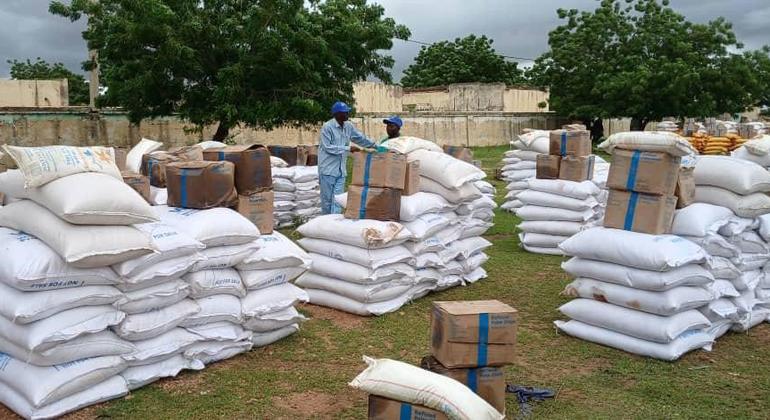Humanitarian aid to Sudanese people stalled by floods and violence


The opening of the vital aid route on Friday was welcomed by officials as it is a vital humanitarian route for delivering emergency aid to millions of people, according to the United Nations Office for the Coordination of Humanitarian Affairs (OCHA).
Reports say the 131 trucks approved will carry food and other relief supplies across the border, aimed at assisting hundreds of thousands of people during and after the peak of the country’s rainy season. These supplies are expected to last through Sudan’s lean season in August and September.
Heavy rains and violence disrupt aid
Meanwhile, the World Food Programme (World Food Programme) reported on Monday that 50 of the organization’s trucks, carrying nearly 5,000 tons of food and nutritional aid, were stranded in various locations across Sudan due to flooding and impassable roads, preventing the delivery of aid.
The agency aims to deliver aid to about half a million people across the Tine border, but heavy rains have prevented trucks from crossing on the Chad side, with some trucks stuck for up to two weeks.
Intense fighting and increased violence in various parts of the country, including Sennar State, Gedaref and Khartoum, have further limited WFP’s access to communities in the midst of conflict zones.
A humanitarian ceasefire “is urgently needed to significantly expand humanitarian access,” OCHA said.
“Ultimately, ending the conflict is the only sustainable solution. It is important that the warring parties leave the battlefield and come to the negotiating table,” the agency continued.
WFP needs to open all border crossings in Sudan to ensure the delivery of emergency food and nutrition assistance.
Additional flood impacts
OCHA alone reported that heavy rains and floods are increasing humanitarian needs in Sudan as some 143,000 people in 12 of Sudan’s 18 states are affected.
The aid coordination office also recorded 27,000 cases of displacement, which may be an under-reported figure as “some of the worst flooding occurred in hard-to-reach conflict hotspots: Khartoum, Gezira, Kordofan and Darfur”.
Flooding also increases the risk of disease outbreaks, including cholera and typhoid, which can be deadly for malnourished women and children.
OCHA reports hundreds of recent cholera cases in Sudan.
In addition, dozens of states in Sudan are experiencing multiple outbreaks at once, while three-quarters of health care facilities in the worst-hit areas are no longer functioning.




